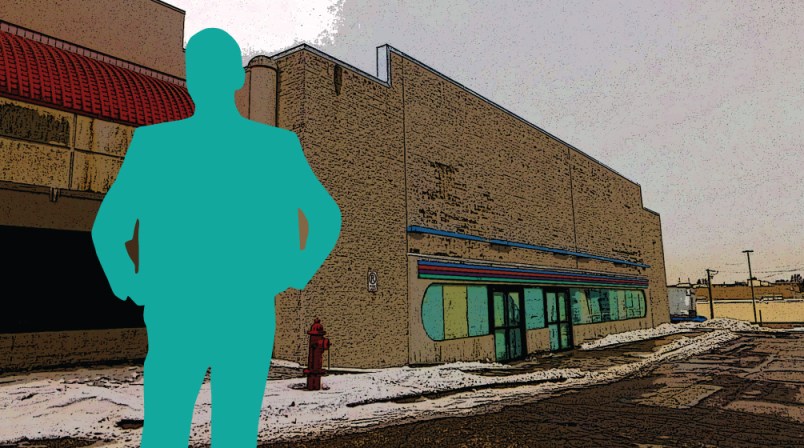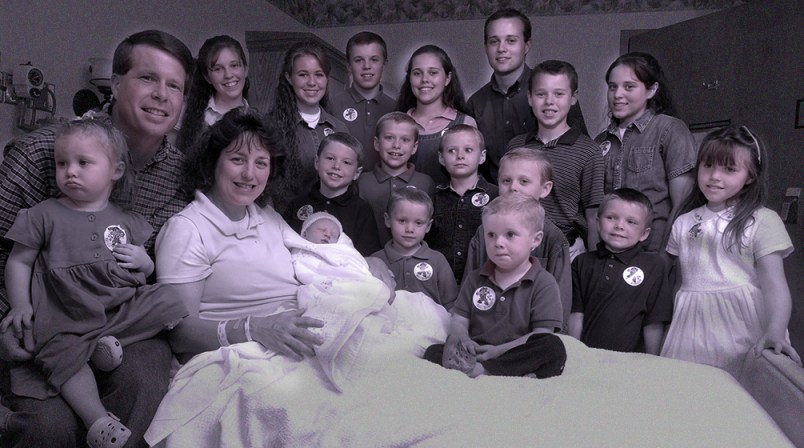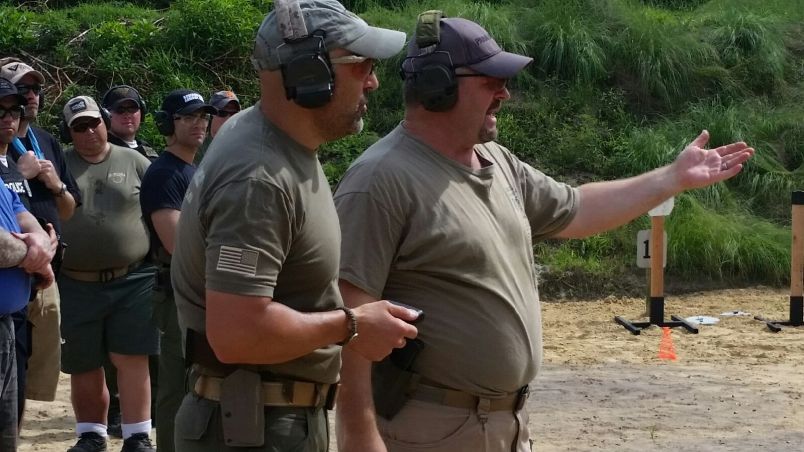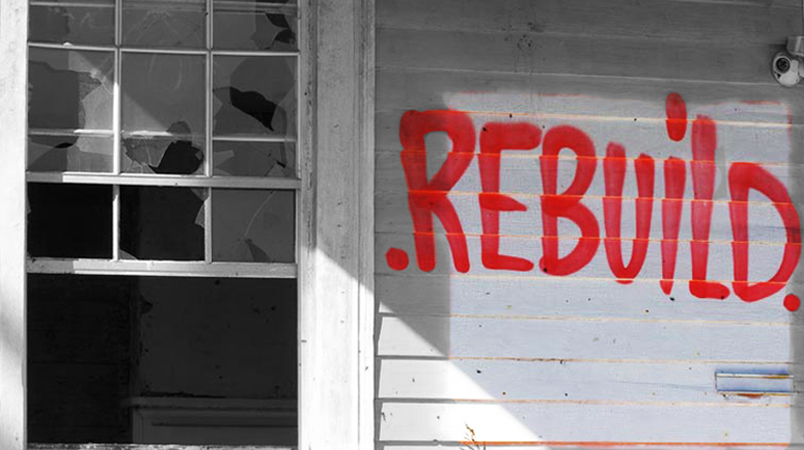It used to be great, then it got better, then it was not-so-great, then it got horrible, and now it’s fabulous.”
That’s the history of Cleveland’s last 50 years, from a man who knows: Dean Rufus, a former radio DJ and staple of Cleveland’s gay scene. Rufus has lived here for nearly his whole life, which is decades, though he won’t say exactly how old he is. In 2006, he opened a gay-friendly variety store (sex toys, novelty items, “tobacco pipes”) in what was once one of the city’s worst neighborhoods—a subsection of Ohio City that until recently had no name. He shared a building with a duo of dingy gay clubs that were best-known for the drug dealers and sex workers who frequented them.
It used to be that the only time local media paid attention to that complex of debauchery on West 29th Street was when someone was beaten or killed outside it. In 2012, Rufus himself was robbed at gunpoint.
In a rapidly changing, post-industrial, post-recession city like Cleveland, three years is an eternity.
Now, the kind of media attention 29th Street gets is the kind every PR firm would charge top dollar for, which makes sense, because the new 29th Street is not some organically-grown neighborhood, but a brand created by one 32-year-old man.
Graham Veysey, the driving force behind this new two-block section on the outskirts of Cleveland’s Ohio City neighborhood, knew a catchy name was crucial.
“We thought, geographically, ‘where are we and how do we brand this part of the neighborhood?’” he told me. “It’s at the middle of all these neighborhoods, so we were thinking, The Elbow, The Junction Point, and then someone said “What about the Hinge?”
And that’s how “Hingetown” was born.

The Striebinger Block, before and after. First photo: Aaron Cassara. Second photo: Graham Veysey.
It’s hard to tell if this teeny neighborhood deserves air quotes at this point, even though Graham Veysey, a Cleveland-area native son, dreamed up this new neighborhood on a computer. And despite the temptations to hipster-hate—to make fun of the new $8 juice bar, the $5 tea joint, the lofts, the swanky spin-cycle spot that’s replaced the gay bars—it’s pretty impressive what’s happened here. Even the older Clevelanders will tell you that. Perhaps especially the older Clevelanders will tell you that. Certainly the newer ones will.
“You can’t always write a check to change a neighborhood,” said Fred Bidwell, a co-founder of the Transformer Station, a gallery on one of Hingetown’s four corners. But in this case, Bidwell said, “It worked.”
Veysey has made it very clear that he has aspirations beyond being a neighborhood developer—through both his words and his actions, namely an unsuccessful run for political office in 2012. But the questions linger: Can something that started as a brand, and that’s run as a business, be welcoming to all—especially in Cleveland, one of the poorest big cities in America?

It would be easy to paint Veysey as a young guy out to make money by kicking out some gays and drug dealers, bringing in the usual yuppie fixings and rebranding a hovel as a haven. It’s especially tempting when Veysey unreservedly talks in Millennial-speak: Holding a concert on 29th Street isn’t an event, but “creative placemaking” with “radical inclusiveness.” Considering leasing to a chain store here isn’t a business decision, but one about “fitting into the narrative of the neighborhood.” And Veysey isn’t just a gentrifier, but a “conscientious gentrifier.”
But standing at the corner of Hingetown, it’s hard to look past the fact that just a few years in, this made-up neighborhood feels real. And once you grant this place that sense of permanence, it becomes apparent that places like this might represent the future of American cities, with Veysey and his architect fiancee Marika Shioiri-Clark as poster children.
Fifty years ago, idealism and capitalism were enemies: You could be either a hippy or a businessman. Thirty years ago, you could either be a punk or a profiteer. These days, many are comfortable being all of the above. Hingetown embodies the gritty urban aesthetic of countercultural movements—street art, cracked pavement, converted spaces. The owner of the fancy tea store called Cleveland Tea Revival, located across the street from Veysey’s loft, even called Hingetown a “counterculture.” Yet this area was masterminded (and financially backed) by someone who’d be more, or at least equally comfortable at Goldman Sachs than a punk show.
When I met Veysey and Shiori-Clark, both wore loose-fitting button-downs, the fadedness of which belied their price. Veysey’s hair looked expensive. Shioiri-Clark’s scarf was oversized. As for any counterculture they display, it’s carefully curated. Their loft is bohemian, but unmistakably bourgeois, filled with artisanal accoutrement—vodkas, soaps, pillows. The couple dress like characters out of Richard Florida’s Rise of the Creative Class.

Marika Shiori-Clark and Graham Veysey. Photo: Peter Moskowitz
Veysey grew up just outside of Cleveland, in the ritzy suburb of Shaker Heights. After leaving the state for college, he returned to Cleveland in 2008 to become a field organizer for Obama’s first presidential campaign. When that ended, Veysey said, he was a bit adrift. He worked making videos for non-profits like the Aspen Institute (a time during which he met Shioiri-Clark), and spent his nights on a friend’s couch in Cleveland. He eventually became part of a seven-member video and brand production company, and that led to work with Ohio City Inc., the community development corporation that helps promote the hippest parts of Cleveland’s West Side. Veysey worked on the branding campaign for a new urban farm in 2010, and thought he’d continue doing branding and video work until at a Christmas party, a real estate agent noticed Veysey’s vanity license plate—OHCITY—and told Veysey about an abandoned firehouse on a desolate block in the neighborhood he might be interested in.
“I really didn’t associate this part of the neighborhood with anything I would want to come over and get involved with,” Veysey said. “But we started to think about how you create a destination with a unique identity.”
In 2011 Veysey and Shioiri-Clark purchased the firehouse and poured tens of thousands of dollars into its renovation. Shioiri-Clark is an architect who has worked on design projects in places like San Francisco and Rwanda. She and Veysey turned the firehouse into a few separate spaces: offices, a large loft the couple now live in with their dog (a pitbull mix with a dalmation vibe), and retail space up front, which now houses a flower shop and a pour-over coffee place. The entire complex wouldn’t be out of place in Brooklyn.
But unlike Brooklyn, Cleveland is still Cleveland.
Clark’s car was broken into three times in the first few months of her living in the firehouse. Sex workers and drug dealers were still the most common pedestrians until recently. Despite the art gallery opening up in early 2013 right across from the fire station, the neighborhood still did not feel like a neighborhood as much as an oasis in the middle of destruction.
So in 2012 Veysey and Clark decided to buy the building catty-corner from them, called the Striebinger Block, for $425,000. The building housed the shady gay bars, about 10 apartments (which, according to Veysey, were home mostly to single men who did not pay rent and whose apartments were literally falling to pieces), and a few businesses—a rib joint and a diner among them—that many current Hingetowners seem to think were mostly in the drug business.
“It was obvious that the negative energy and petty crime was coming from the corner of the Striebinger Block,” Clark said. “Everything in this neighborhood was very fortress-like.”
Veysey informed the businesses in Striebinger that if they didn’t improve their image, he’d leave their leases unrenewed. After some handwringing and negotiating, almost everyone moved out. The only remnants of the Striebinger Block are the Dean Rufus House of Fun and a hair salon owned by a woman named Tymeka Greer. Rufus and Greer are some of Veysey’s biggest fans; they say business is up, and their businesses are safer.
“Business is thriving,” Greer said. “I can’t see us doing any worse. I can just see it becoming better.”

In my experience reporting on gentrification, it’s not hard to rustle up loud objections from urban renewal’s casualties. But in Hingetown, the transition from rundown to chic appears seamless. Most of the Striebinger Block’s occupants seem to have vanished off the face of the earth. One man had a problem with being kicked out of the Striebinger Block, but he doesn’t have a phone number listed that works. The one reachable former tenant, Steve Burchett, said he was peeved Veysey only gave him 30 days notice to vacate his apartment. But, he said, he’s fully in support of what Veysey has done.
I tried fishing for a “displaced gay culture” story, but two of the gay people who both had experience with the old neighborhood, and who are now intimately involved in its rebirth, hated what it used to be. One, Brandon Sitler, once bartended at the complex. He had to be walked to his car by security each night so he didn’t get mugged for his tips. He now owns the city’s swankiest flower shop, located in the bottom of Veysey’s firehouse.
“I don’t think there’s a need for a gay scene in Cleveland anymore,” Sitler told me. “I go wherever I want with my friends. Every bar is a gay bar.”
And the usual racial dimension of gentrification doesn’t really fit here, either. Ohio City is different than, say, the Mission District in San Francisco. It may be gentrifying, but its minority population is increasing as well. In the city’s five most gentrifying neighborhoods, the black population increased by 75 percent between 2000 and 2010, according to Richey Piiparinen, senior researcher associate at the Center for Population Dynamics at Cleveland State University.

Wife and husband team Amber Pompeii and Mike George sit in their tea shop Cleveland Tea Revival, in Hingetown. Photo: Peter Moskowitz
But, being a journalist, my default is to find the problems inherent in everything, especially gentrification. So I was glad Piiparinen also gave me an excuse to dampen my enthusiasm for Hingetown. The two blocks of hipster haven aren’t bad themselves, said Piiparinen, but they’re not much in the way of an economic development tool. They don’t help most people in Cleveland.
Whenever young, white and monied people move into a previously-poor neighborhood, reporters (like me) descend upon it, and claim what’s happened to represent the future of America (as I did earlier). The “Next Williamsburg” story is now so common that it’s become somewhat of a joke. And sure, it’s cool that young people are moving back to downtowns, opening businesses and creating communities; Hingetown embodies all of that. But the new hood, like most other examples of cute, hip and pricey neighborhoods in urban America, is tiny. It’s two blocks in a sea of poverty. And there’s a growing body of research that shows that when we talk about gentrification, we’re not talking about the replacing of poverty by wealth, but the creation of tiny islands of wealth, like Hingetown, right next to crushing poverty.
Cleveland is one of the poorest big cities in the nation; more than half of its children live in poverty. That, of course, isn’t Graham Veysey’s fault. But if Veysey is interested in “doing well by doing good” as he put it, he might have to start addressing the gaps in Hingetown’s narrative.
“I think it’s a good thing they’re building [Hingetown] up, but it’s also gentrification because low income people really can’t afford it,” said Carrie Walker, a 63-year-old who lives in public housing about a half-mile from Hingetown. “And that’s a problem. If it was more affordable that’d be great.”

Hingetown block party. Photo: Graham Veysey
There are signs Veysey is serious about the “doing good” part: After the Obama campaign, Veysey tried his hand at being a candidate. In 2012 he ran for Congress against Rep. Marcy Kaptur and Dennis Kucinich. Veysey’s politics during that campaign were those of a generation growing up in the age of neoliberalism: He was left of the two more established candidates on social issues like gay marriage and abortion, and more to the right on economic ones. Veysey is okay with things like NAFTA, a liberal bogeyman; he thinks America’s debt is one of the country’s biggest issues; he thinks underperforming schools should be starved of money.
Veysey only captured 4 percent of the vote, but the run nonetheless whetted his appetite for more do-goodery.
“I thought that I could have brought value when I ran for office,” Veysey said. “But you don’t have to be in office to bring value to a community.”
Still, there are major differences between being the King of Hingetown and a congressman. Political leaders are, at least in theory, meant to represent everyone, not just the well-off. And Hingetown is definitely not meant for everyone.

Cleveland isn’t Detroit; I was told that again and again by Clevelanders. But at one point the two cities seemed to share similar fates. Both were beacons of heavy industry. Cleveland produced everything from steel to chemicals to cars. Heavy industry was so concentrated along the city’s section of the Cuyahoga River that the river caught fire several times from oil pollution, most infamously in 1969.
And both cities experienced similar economic declines over the last 50 years thanks to outsourcing of factory jobs and suburbanization. But at some point, Cleveland and Detroit diverged. Detroit remained a one-industry town, catering to its car companies, and as that industry fled, nothing came to replace it. In Cleveland, the city diversified by offering tax breaks and other incentives to lure the tech and health sectors away from higher-cost locales. Those sectors have in turn used their clout to lure the young and monied to Cleveland. Cleveland Clinic, Case Western Reserve and others offer forgivable loans for employees who buy houses within the city. Cleveland is now booming, at least compared to closeby Rust Belt towns. But its climb from post-industrial relic is far from over.
After leaving Hingetown I took a ride around the less well-off sections of the city with Richey Piiparinen. He told me that Cleveland is at a crossroads. One day, it could look something like Boston, with a high-tech sector providing the jobs to people that then have the money to afford places like Hingetown. Or it could look like Chicago, where, as Piiparinen put it, “You have the creative class, and then you have the South Side of Chicago.”
If Veysey were just a property owner, it’d be unfair to put the burden of the future of Cleveland on him. But from his run for office, and his stated willingness to do it again, it’s clear Veysey wants to take on that burden.
Down the street from Hingetown is a collection of houses owned by a local community activist named Bill Merriman. Merriman charges low rent to people like Paula Kampf, a positive psychology practitioner who considers herself middle class.
On a recent walk around the neighborhood, Kampf told me that at Ohio City community meetings these days, there’s a sense that her neighbors are becoming increasingly against anything—an expansion of a facility for the developmentally disabled, for example—that doesn’t fit into the narrative of Ohio City as upscale and hip.
“I moved to Ohio City wanting my kids to know rich and poor,” Kampf told me as we walked from her house, past the tea shop and juicery, and down to the other side of the block, where empty buildings still outnumber occupied ones. “I’m worried about losing the poor side of things….We need to make sure we’re intentional about who is here, and who isn’t.”
Peter Moskowitz is a writer and journalist from New York. He’s writing a book about gentrification.






